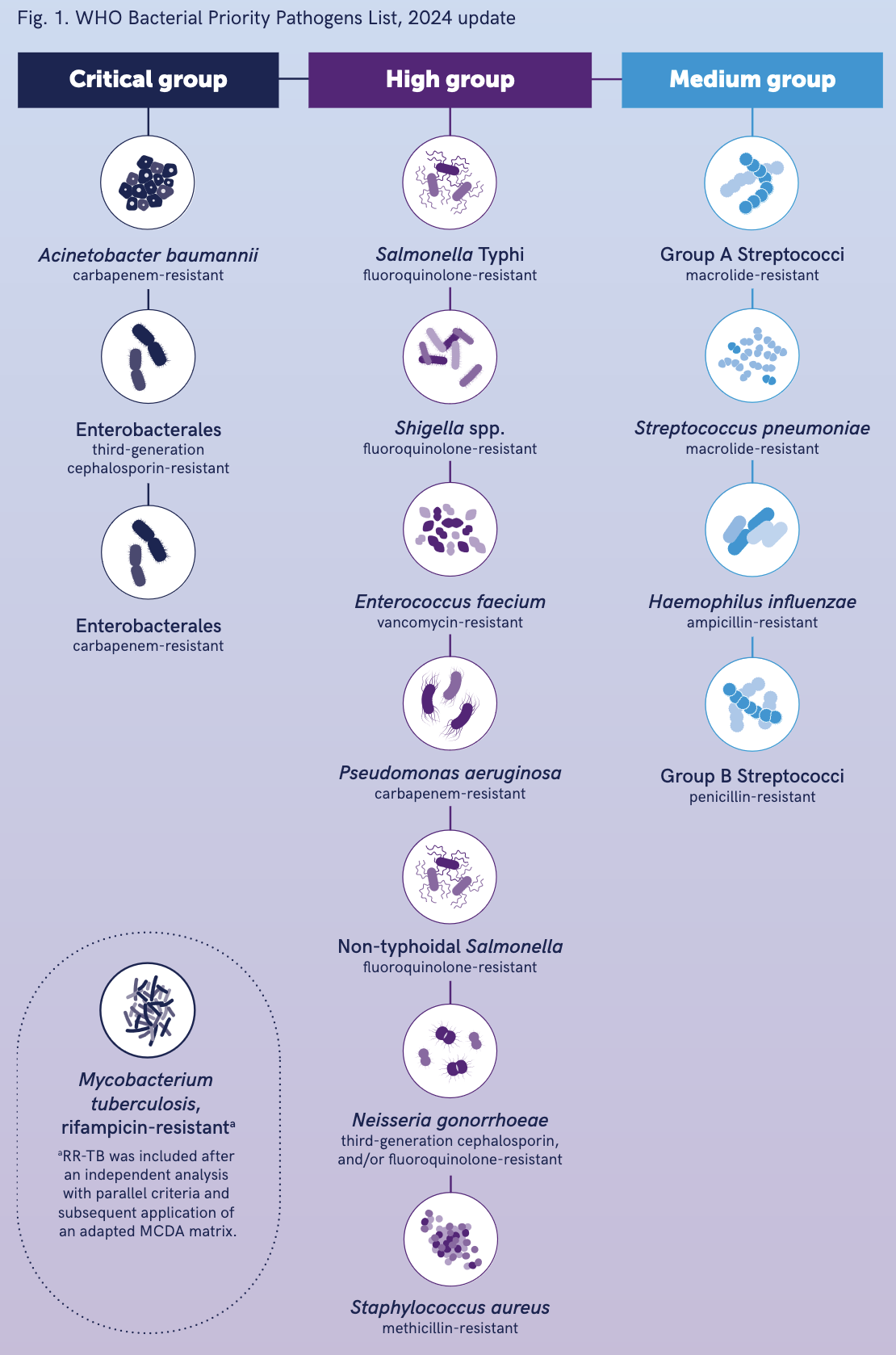News Excerpt:
Critical priority pathogens present major global threats due to their high burden, and ability to resist treatment and spread resistance to other bacteria, noted the latest Bacterial Pathogens Priority List (BPPL) updated by the World Health Organization (WHO).
Why an update was required?
- The 2017 prioritization exercise partially addressed aspects such as specific resistance patterns, coresistance, and the level of innovation within the antibacterial medicines in the R&D pipeline.
- This update aims to address some of those limitations and to incorporate lessons from experience with the first BPPL exercise.
- The update takes advantage of recent advances in surveillance platforms, which have resulted in better surveillance data.
- The BPPL is a compass for R&D priorities and investment and for public health action. While this updated BPPL is a global tool, its application requires adaptation and contextualization to account for regional differences in the distribution and ecology of bacterial pathogens, as well as variations in the vulnerable groups and the burden of AMR.
Key highlights of the report:
- The 2024 WHO Bacterial Priority Pathogens List (WHO BPPL) is an important tool in the global fight against antimicrobial resistance.
- The list covers 24 pathogens, spanning 15 families of antibiotic-resistant bacteria grouped into critical, high, and medium categories for prioritization.
- In this update, Gram-negative bacteria that are resistant to last-resort antibiotics, such as Acinetobacter baumannii and various pathogens in the Enterobacterales order, as well as rifampicin-resistant (RR) Mycobacterium tuberculosis, are listed as of critical priority because of their ability to transfer resistance genes, the severity of the infections and disease they cause and/or their significant global burden, particularly in LMIC.
- The inclusion of Salmonella and Shigella as of high priority reflects their increasing resistance to existing treatments and the high burden of infection associated with these pathogens, particularly in LMIC.
- Other high-priority pathogens in the 2024 BPPL are antibiotic-resistant Pseudomonas aeruginosa and Staphylococcus aureus, due to their global threat, especially in health-care settings.
- Another pathogen of public health importance is antibiotic resistant Enterococcus faecium, a bacterium that is particularly important due to its ability to transmit resistance elements across the One Health spectrum.
- The 2024 BPPL includes Group A and B Streptococci, Streptococcus pneumoniae and Haemophilus influenzae in the medium-priority category, indicating an urgent need to address their public health impacts, particularly in vulnerable populations in resource-limited settings.

|
Antimicrobial Resistance (AMR)
|


